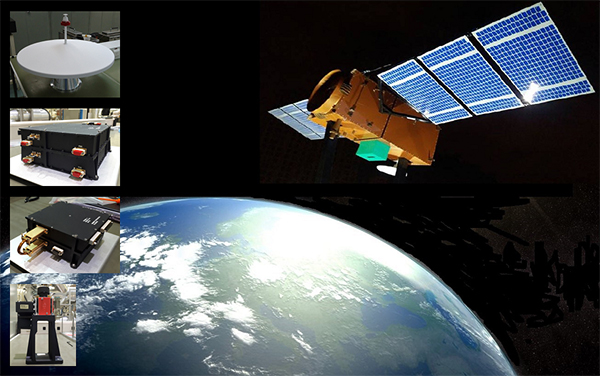In the space segment, Omnisys is the leading provider of embedded equipment for the CBERS (China-Brazil Earth Resources Satellite) Program satellites and provides solutions for the PMM (Multi-Mission Platform) Program.
The satellites of CBERS Program are the result of a technology cooperation agreement between Brazil and China that began in 1988 and are intended for climate monitoring, land use projects, water resources management, urban growth, water resources monitoring, licensing and environmental monitoring, among other applications. Private companies and institutions such as Ibama, Incra, Petrobras, Aneel, Embrapa and the Secretariats of Finance and Environment use the images of these satellites in Brazil.
For the CBERS Program Omnisys is a manufacturer of the MWT, OBDH, AOCC and DCS subsystems.
The satellites of PMM Program have as their basic architecture the use of the same platform that contains the necessary equipment to assure the necessary functions for the satellite operation, regardless of its payload.
The first satellite of this program is Amazonia 1, a remote sensing satellite with a wide field of view camera, similar to the WFI camera that equips the CBERS Program satellites.
For Amazon 1 satellite of PMM Program Omnisys is the AWDT Subsystem manufacturer.
Products
- MWT Subsystem
-
The MWT Subsystem of CBERS satellites has the function of receiving, digitizing, modulating and transmitting data from CCD cameras (MUX and WFI) to earth stations.
The MWT subsystem operates in the X-band and consists of MUX (main and redundant) camera modulators, WFI camera modulator, LVDS conditioner and camera signal redundancy. It also contains a power bus and telemetry remote control signal distribution and conditioning, high power switch for redundant transmission channel switching, power amplifier (TWT) valves and duplexer that combines the power signals of the two channels and makes them available to be routed to the antenna.
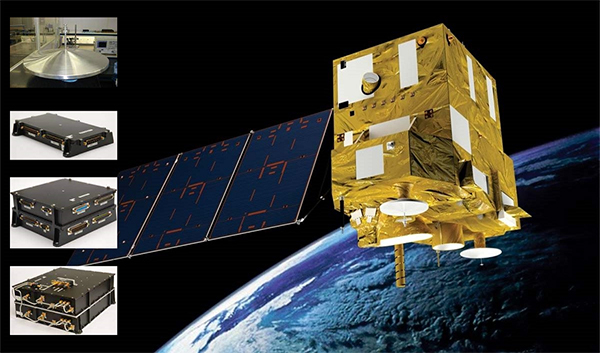
- OBDH Subsystem
-
The CBERS OBDH (On-Board Data Handling) Subsystem is the on-board computer responsible for remote control and telemetry communications between the satellite and earth stations and is composed of a Central Terminal Unit (CTU) and several Remote Terminal Units (RTU) distributed along the structure of the satellite.
This subsystem performs the following functions: receiving, processing and handling the remote controls received from ground stations; collect, process and send satellite telemetry to ground stations; provide the ability to program-controlled commands, command groups, and time-bound commands. It also execute the store and retrieve important data exchanged between the OBDH and the satellite attitude and orbit computer (AOCS); provide maintenance processing capability including system configuration, status data and event reports and fault diagnostics; manage the satellite data communication bus and provide onboard self-control, user-dedicated processing and data formatting capabilities.
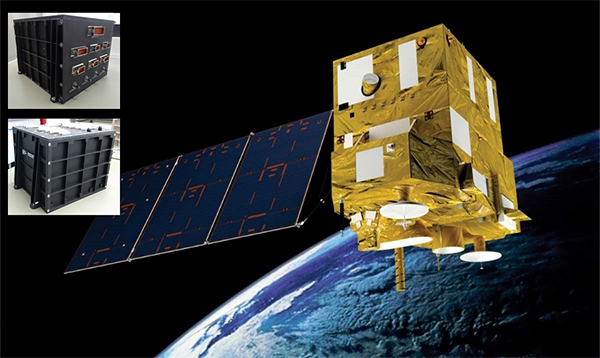
- AOCS Subsystem
-
The AOCS (Attitude and Orbit Control) Subsystem is the attitude and orbit computer used on CBERS satellites and consists of a central processing unit (AOCC) and various local satellite sensor and actuator interfaces (LTU).
This subsystem performs the following functions: eliminate initial attitude deviations; acquire the relative position of the sun and track it itself; acquire and maintain orbit; detect faults and reconfigure, act in emergency mode; acquire the global attitude and compute the ephemeris.
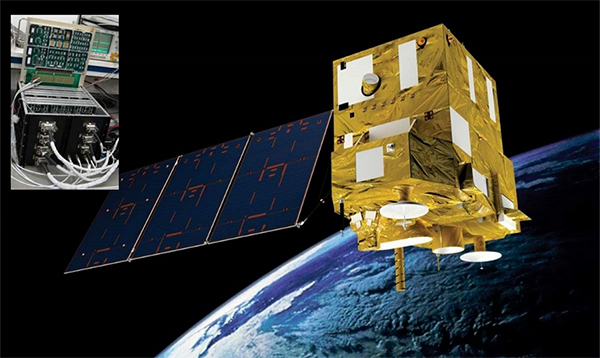
- DCS Subsystem
-
The function of CBERS DCS Subsystem is to collect meteorological data sent from ground-based data collection platforms (PCDs) and relay this data to earth stations.
This subsystem consists of a Transponder that contains a UHF Receiver and an S-Band Transmitter; a UHF Transmitter and a Diplexer.
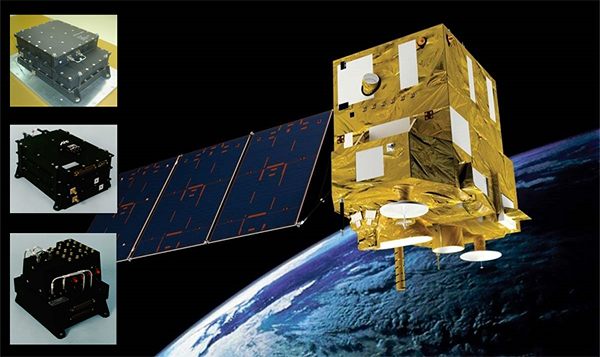
- AWDT Subsystem
-
The Amazon 1 AWDT Subsystem (PMM Program) has the function of receiving, digitizing, modulating and transmitting data from wide field of view (WFI) cameras to earth stations.
